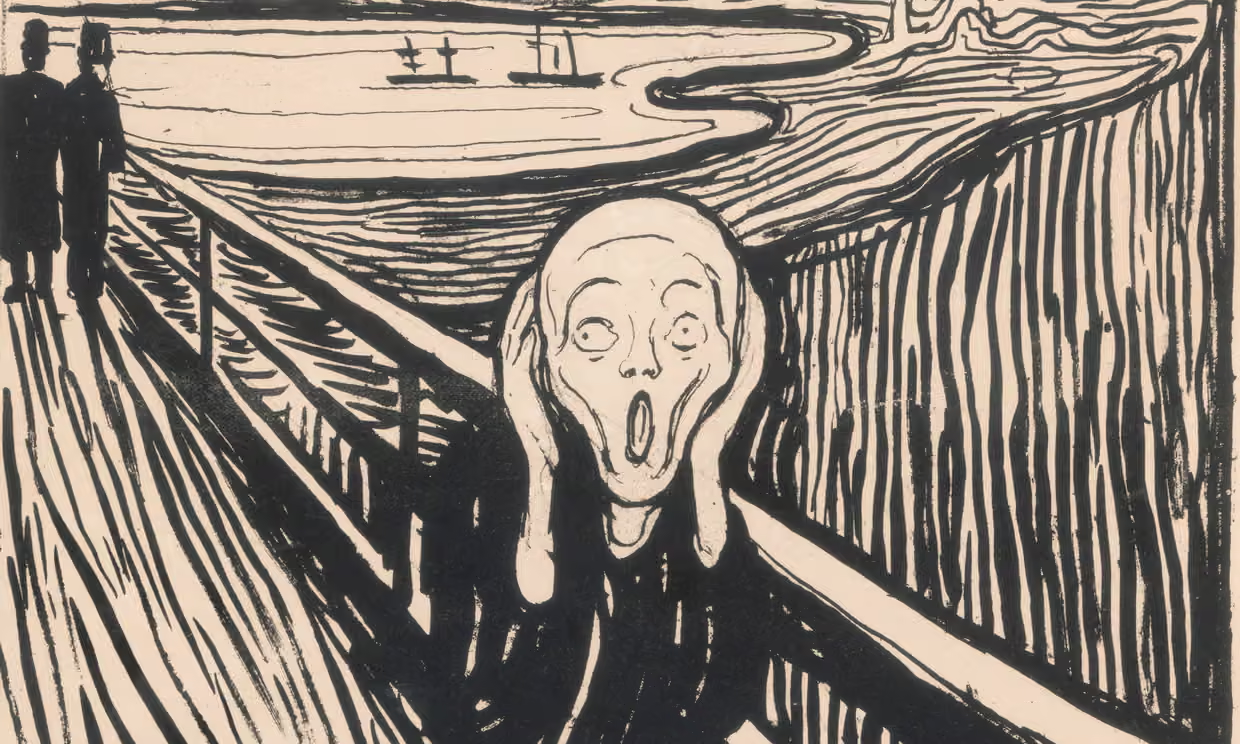
Why’d They Put That In A Museum?
Show Notes

Artist: Edvard Munch (Norwegian, 1863 – 1944)
Item (above): The Scream, 1893
Details:, tempera, and pastel on cardboard. 35.7in x 29 in (91 cm x 73.5 cm)
Item (above right): The Scream, 1895
Details: lithograph
Item (below right): Homer Simpson screaming
Details: cartoon
The Scream by Edvard Munch
The Scream by Edvard Munch is one of the world’s most recognizable paintings. But how much do you really know about it? For one thing, it’s not one of the most recognizable artworks… since there are multiple versions of the same work. Also, according to Munch’s notes, the figure in the picture isn’t the one who’s screaming. (Listen to the podcast to find out who—or what—is screaming.) Sarah Lees and Beth Bacon also talk about the picture’s composition, cultural context, emotional impact, and the thefts of its versions. They explore Munch’s background, his influences, and the mixed reception of his work during his lifetime.


The Story Behind Edvard Munch’s “The Scream”
How much do you know about one of the world’s most iconic paintings—Edvard Munch’s The Scream? In this podcast episode, we discuss why Edvard Munch’s artwork has been given this prominent position and what cultural narratives it reveals.
The Scream Echoes Through Time
The Scream is widely recognized for its haunting expression of universal feelings of angst and despair. The painting’s intensity and emotional turmoil resonate far beyond its visual elements. As the hosts note in this podcast, the image is “as familiar as the Mona Lisa.”
A Multi-Version Masterpiece
It is notable that Munch’s renowned piece exists in multiple versions. The most recognized iteration, housed in the National Museum in Oslo, is made with several media including tempera, oil paint, pastel, and crayon on cardboard. This fusion of materials contributes to the painting’s distinctive matte finish and its raw, visceral impact.
Decoding Munch’s Vision
Even though it seems like the title of the painting describes the figure with the open mouth, Munch himself suggested that The Scream captures a moment in his own life when he had an uncanny sense that nature itself was screaming. This perspective transforms the painting into a commentary on the turmoil inherent in the natural world and its impact on human isolation.
The Legacy and Cultural Impact
Munch’s The Scream has become a cultural symbol. From its adoption in literature, such as Philip K. Dick’s Do Androids Dream of Electric Sheep?, to its thematic relevance in modern ecological debates, the painting may be even more resonant and relevant today than it was when first exhibited.
From Museum to Cultural Icon
How did The Scream earn its place in prominent museums and become embedded in our cultural awareness? As Beth and Sarah explore, it was not merely Munch’s angst-ridden genius that propelled his work to fame, but a confluence of factors including strategic exhibition, astute cultural mythmaking, and the sheer emotive power of his subjects. By the time of his death in 1944, Munch was a significant member of the modernist art movement.
The Scream is a steadfast testament to Munch’s mastery in conveying raw human emotion. It serves both as a personal reflection of anxiety and a broader critique of human detachment from nature.
Up next: Marcel Duchamp
Join us next time as we explore the intriguing world of Marcel Duchamp, an artist who was born in France and worked in New York. Duchamp is known for his wit and his contributions to the Dada and Surrealism movements.
Contact Us
Say helloAbout the Podcasters

Sarah Lees
Sarah is a museum curator and researcher who has worked in organizations both large and small, and who remembers her first assignment for an art history class – to look into Rembrandt’s eyes and describe what she saw there. She believes everyone can find those kinds of connections to some form of creative expression, whether it’s a painting, a grandmother’s quilt, or a perfectly formed pen-stroke in a manuscript.

Beth Bacon
In addition to being an avid museum-goer, Beth Bacon is an author for young readers. Her books empower today’s kids to learn about themselves and the world through reading. She is also a teacher and branding consultant and a volunteer at the Missouri History Museum. Beth holds an MFA in Writing for Children and Young Adults from Vermont College of Fine Arts, an MA in Communication Arts from NYU, and a BA in Literature from Harvard University.
Music Credit
The music you hear in the intro and outro was composed by Edward Whelan. We appreciate his contribution to our podcast.
